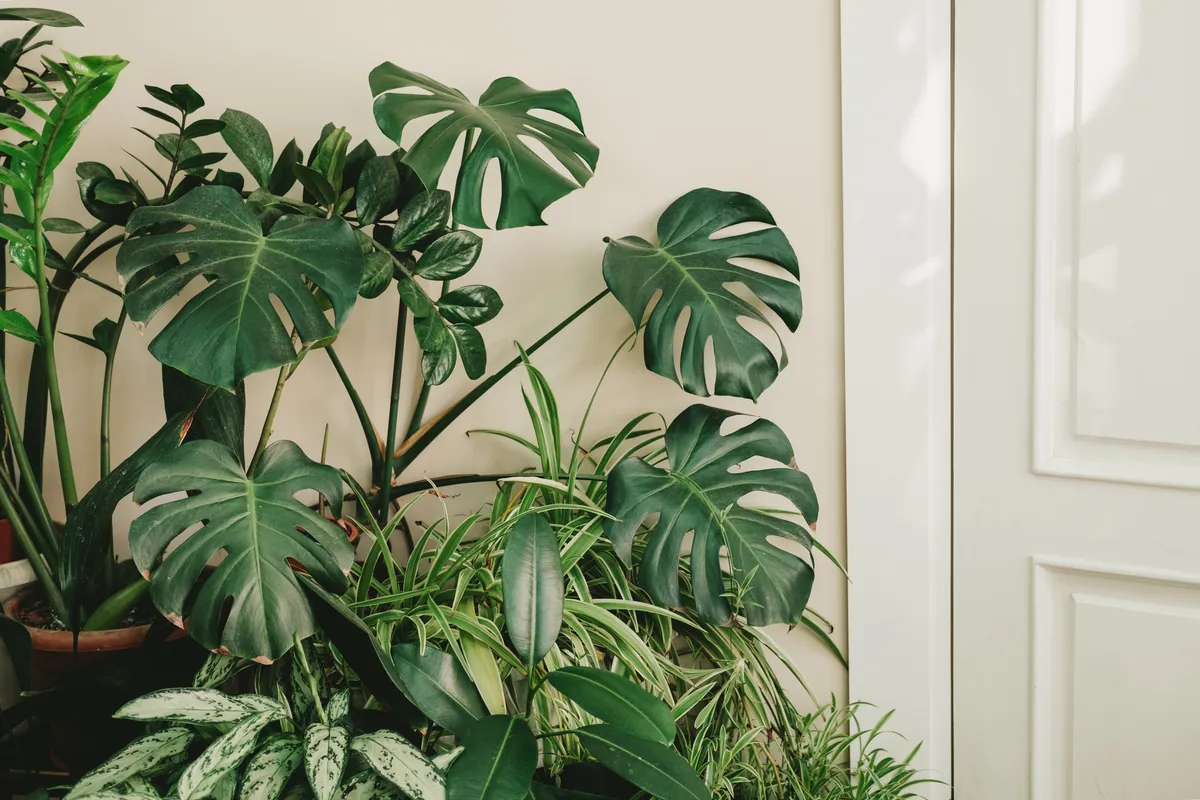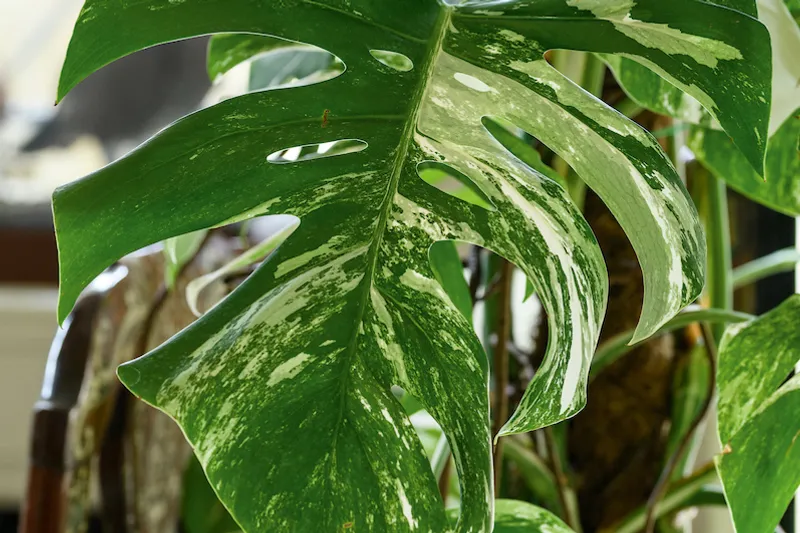If there is one plant that has come to epitomise the current nostalgia for house plants, it has to be the glorious Swiss cheese plant. Botanically known as Monstera deliciosa, this supreme foliage plant was once a feature of many a 1970s home, and four decades later it is becoming popular once more.
The genus Monstera forms part of the aroid family, Araceae. Monstera are hemiepiphytic, meaning they are partly epiphytic (growing on the surface of another plant deriving its moisture and nutrients from the air), but begin life terrestrially (growing in soil) eventually scrambling up trunks of larger hosts into the understorey of the tropical canopy. Native to the tropical regions of the Americas, Monstera send out long, adventitious, aerial roots for support and water uptake and older specimens can survive without any contact to soil at all.
What causes the holes in a Swiss cheese plant?
The adult leaf fenestration – the holes in the leaves – are a result of the plant’s position low in the forest canopy where it receives very little light. With these holes, the leaves can spread out covering huge areas where they are more able to catch sunflecks of unpredictable light. The holes also allow precipitation to pass through to the roots. Without holes, the vast leaves would act as umbrellas and roots could be left dry.

Monstera deliciosa: how to care for a Swiss cheese plant
Swiss cheese plants make fantastic, dependable houseplants. They will forgive a lot, including being constantly moved around, sporadic and minimal watering and, in particular, lower light and humidity levels. They also will adapt impressively to where light can be found, growing in the most unusual ways and fast. Physically they are huge and so will immediately transform an indoor space and create an immersive jungle atmosphere.
How to water Monstera deliciosa
Water regularly, enough to keep the soil from drying out, although Monstera will tolerate periods of drought. A feed every two to three weeks in spring and summer helps keep the leaves from becoming chlorotic. Despite being native to the tropics Monstera will thrive in very low humidity and will tolerate a shadier spot although they grow more dramatically and much more quickly in brighter light.
How to propagate Monstera deliciosa
To propagate, cut away a tip shoot consisting of two leaves and place it in a jar of water on a bright windowsill. In a few weeks watch some new roots appear and the cutting can be potted on.

Where to put Monstera deliciosa
Up high on a large shelf or on top of a cabinet in bright light and little direct sunlight, is the perfect spot to display Monstera, to show off their famously big leaves. They grow absolutely enormous and, unless properly supported, staked or trained, can topple over as they grow towards light.
When I moved into my first house in London, I was welcomed by a large yucca and a Swiss cheese plant that had been left behind by the previous tenant. Initially dejected and dusty – after some love and care that included a repot, staking and feed – the cheese plant now thrives on top of a wardrobe to the side of a small south facing window.
The best compost for Monstera deliciosa
Monstera, in common with most aroids, like a free-draining, open-mix growing medium, such as bark, charcoal or pumice, or a free-draining, well-aerated, peat alternative compost.
Which is the best Swiss cheese plant for you?
If space, or the lack of it, is an issue or you want permanently to grow your Monstera on a shelf, then you may want to consider Monstera adansonii instead. Known as the Philodendron monkey mask, Monstera adansonii is the smaller cousin of Monstera deliciosa, so it needs much less space. The leaves are thinner and oval and because it has more shoots and stems, it more forgiving of inexperienced pruning.
Variegated Monstera deliciosa

Another plant to look out for is Monstera deliciosa ‘Variegata (above)’, the much sought-out variegated cultivar, with striking, variable, marble white markings. The range of these markings depends on the individual plant.
Where to buy Monstera deliciosa
Grace & Thorn
Tel 020 7739 1521, graceandthorn.com
Root Houseplants
root-houseplants.com